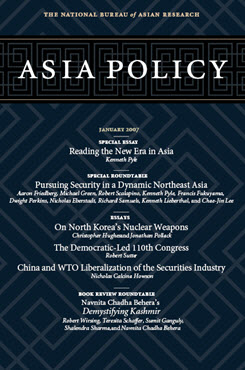Reading the New Era in Asia
The Use of History and Culture in the Making of Foreign Policy
This essay is based on a keynote address that the author gave at the conference “Pursuing Security in a Dynamic Northeast Asia,” held November 17-18, 2006, in Seattle to launch NBR’s Kenneth B. and Anne H.H. Pyle Center for Northeast Asian Studies.
The end of the Cold War opened a new era for Asia. The center of gravity of the global economy was shifting from the North Atlantic to the Asia-Pacific region. A region that had been a colonial backwater when the Cold War began was now the emerging new center of world power and influence. After being dominated by the Eurocentric world throughout the modern era, Asia began to come into its own—increasingly subject to its own internally generated dynamics. For the first time in modern history, Asian nations acquired the power to adopt active roles in the international system and to shape their regional order. Asia in the post–Cold War era is in a kind of interregnum, however, lacking a fixed regional structure or a recognized legitimate order to cope with its diverse cultural and political systems, and having vast differences of wealth and population, competition for energy resources, arms races, border disputes, conflicting historical legacies, rampant nationalisms, and limited experience with multilateral organizations.
About Asia Policy
Asia Policy is a peer-reviewed scholarly journal presenting policy-relevant academic research on the Asia-Pacific that draws clear and concise conclusions useful to today’s policymakers. Asia Policy is published quarterly in January, April, July, and October and accepts submissions on a rolling basis. Learn more


